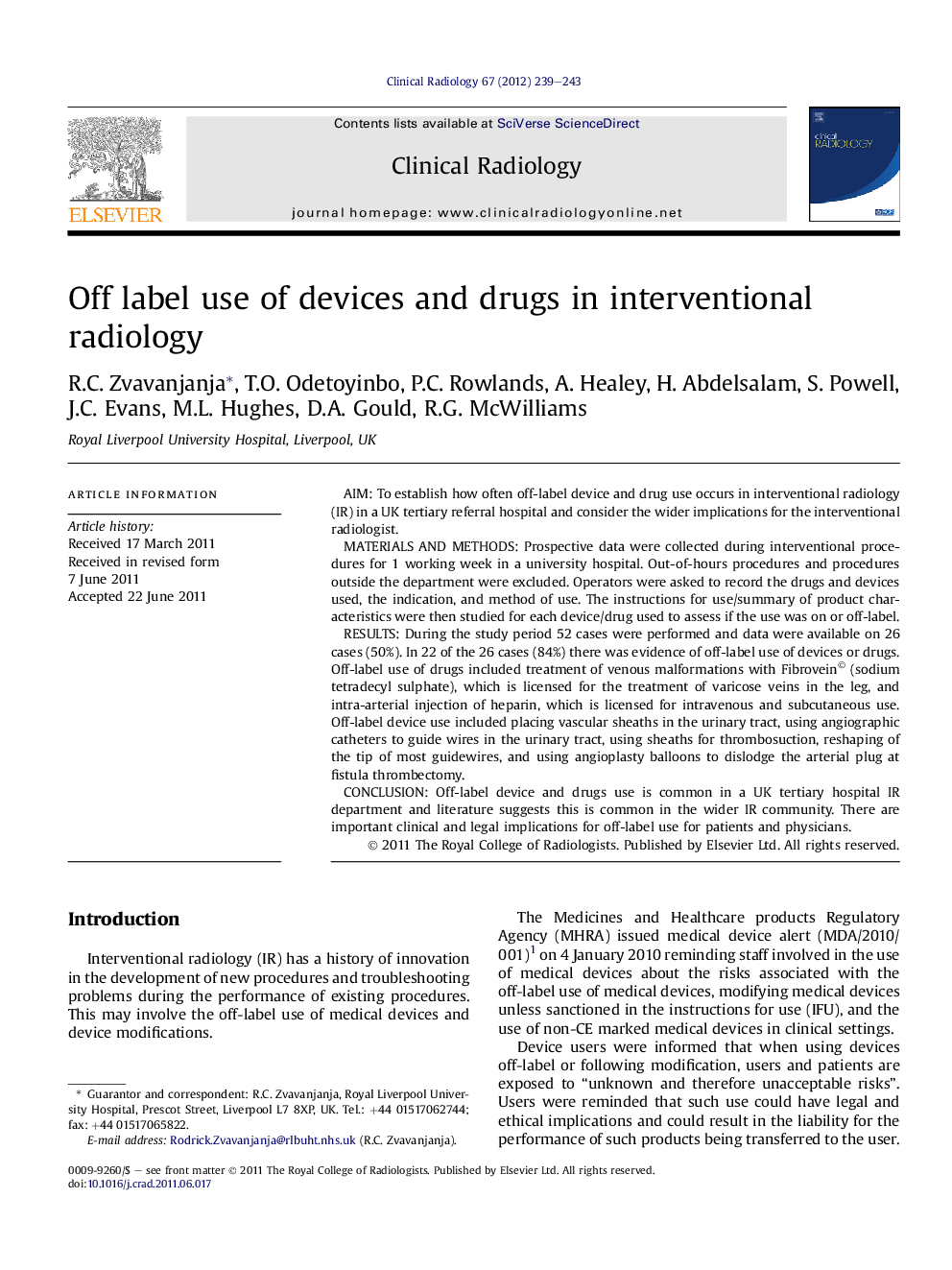| Article ID | Journal | Published Year | Pages | File Type |
|---|---|---|---|---|
| 3981687 | Clinical Radiology | 2012 | 5 Pages |
AimTo establish how often off-label device and drug use occurs in interventional radiology (IR) in a UK tertiary referral hospital and consider the wider implications for the interventional radiologist.Materials and methodsProspective data were collected during interventional procedures for 1 working week in a university hospital. Out-of-hours procedures and procedures outside the department were excluded. Operators were asked to record the drugs and devices used, the indication, and method of use. The instructions for use/summary of product characteristics were then studied for each device/drug used to assess if the use was on or off-label.ResultsDuring the study period 52 cases were performed and data were available on 26 cases (50%). In 22 of the 26 cases (84%) there was evidence of off-label use of devices or drugs. Off-label use of drugs included treatment of venous malformations with Fibrovein© (sodium tetradecyl sulphate), which is licensed for the treatment of varicose veins in the leg, and intra-arterial injection of heparin, which is licensed for intravenous and subcutaneous use. Off-label device use included placing vascular sheaths in the urinary tract, using angiographic catheters to guide wires in the urinary tract, using sheaths for thrombosuction, reshaping of the tip of most guidewires, and using angioplasty balloons to dislodge the arterial plug at fistula thrombectomy.ConclusionOff-label device and drugs use is common in a UK tertiary hospital IR department and literature suggests this is common in the wider IR community. There are important clinical and legal implications for off-label use for patients and physicians.
